Measuring Nonfasting LDL-C: A Formula for the Future?
Will results of a study comparing a new formula for evaluating LDL-C in the nonfasting state and the Friedewald method turn heads?
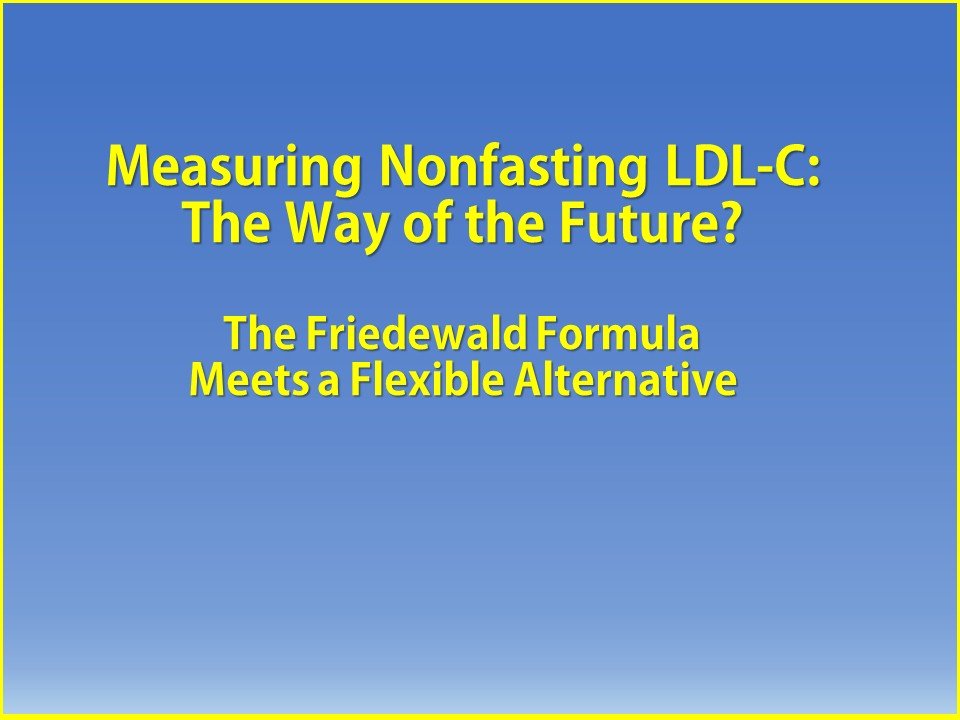
Recent expert recommendations from the US and Europe endorse evaulating lipid levels in the nonfasting state.1,2 Among the reasons for the guidance are improved patient convenience and improved clinical efficiency: avoids overloading morning appointments for bloodwork. About 38% of patients in the US may already be having their lipids checked in the nonfasting state. Moreover, there are concerns about the accuracy of the standard formula used to assess LDL-C, the Friedewald Formula. A new study tests the Friedewald method against a new way to measure bad cholesterol. Click through this short slide show for details and results.
NEXT

Friedewald equation has been the clinical standard for assessing LDL since the 1970s; originally derived in the fasting state and may underestimate LDL in certain persons. The newer method uses an adjustable ratio of triglycerides to VLDL to improve LDL estimates.
NEXT
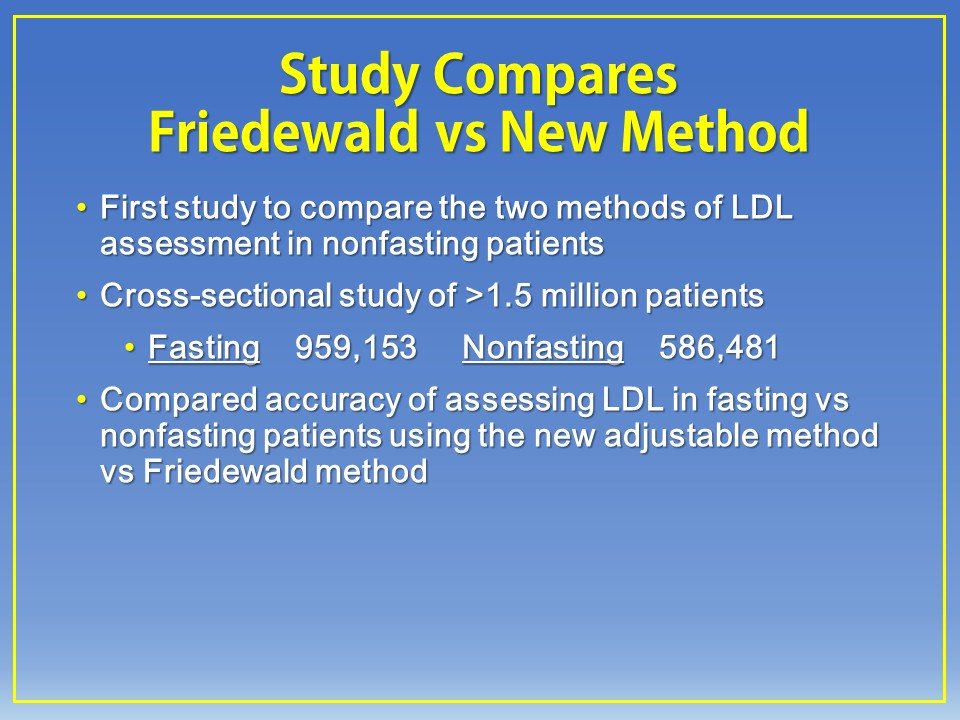
A recent cross-sectional study of >1.5 million patients was the first to compare Friedewald to the new adjustable method of LDL assessment in nonfasting patients.
NEXT
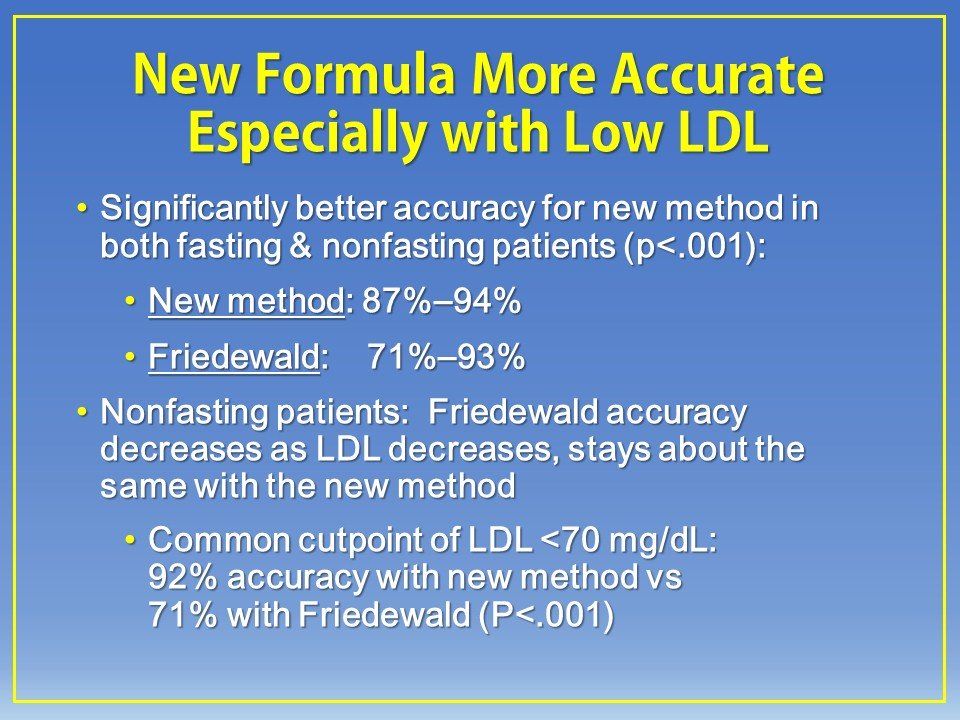
The flexible method of calculating LDL showed better accuracy in both fasting and nonfasting patients than the Friedewald method, especially in patients with low LDL.
NEXT
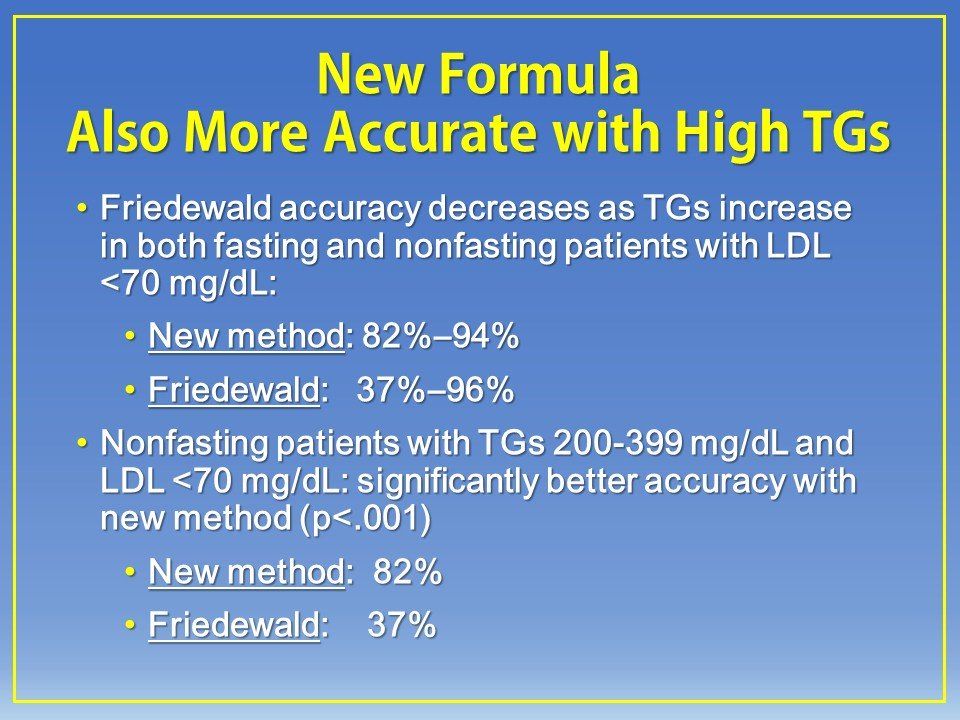
Accuracy in estimating LDL-C was also significantly better with the new method vs Friedewald in patients with high triglycerides.
NEXT
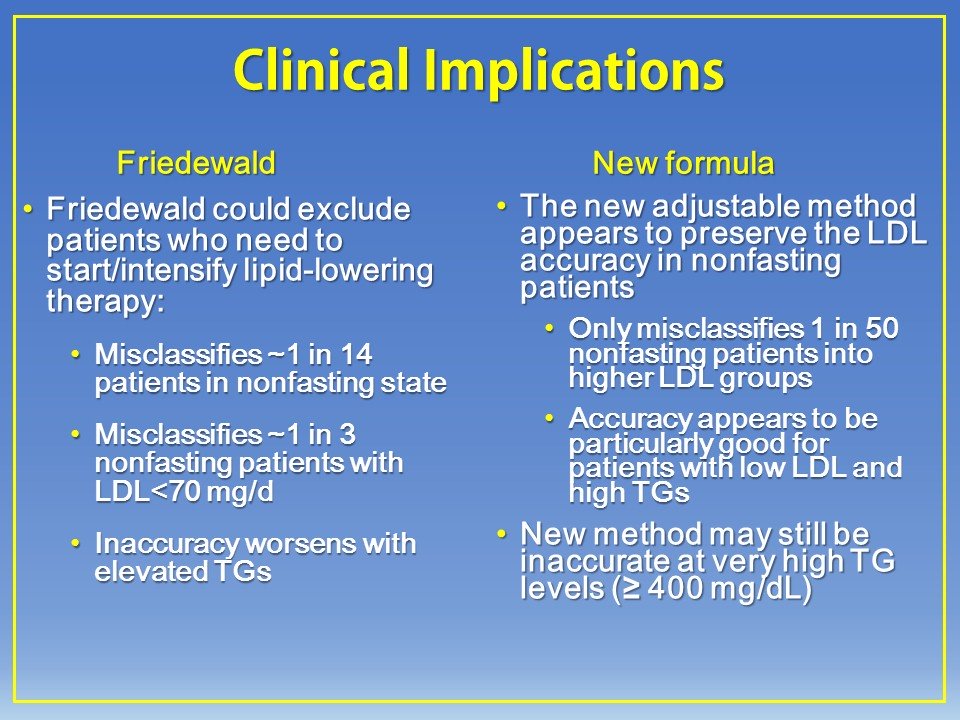
Clinical Implications: The inaccuracy of the Friedewald method could exclude some patients who need to start or intensify lipid-lowering therapy: the equation misclassifies ~1 in every 14 patients in the nonfasting state; the new flexible method misclassifies 1 of 50 nonfasting patients into higher LDL groups.
NEXT

Take Home Points: First study to show that a novel adjustable method of measuring LDL performs better than the traditional Friedewald method in both fasting and nonfasting patients; accuracy of new method stays the same as LDL decreases and as triglycerides increase and is particularly well preserved in patients with low LDL-C and high triglycerides.